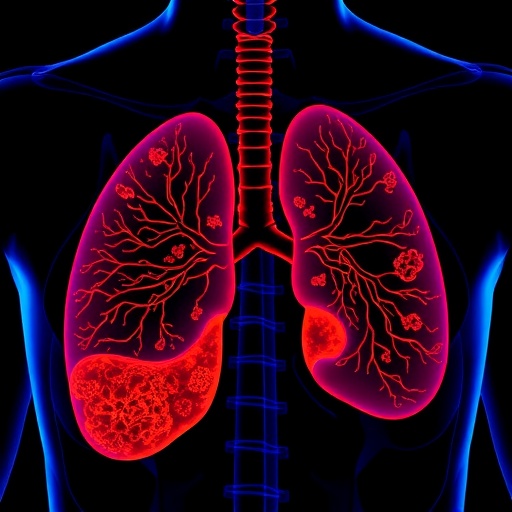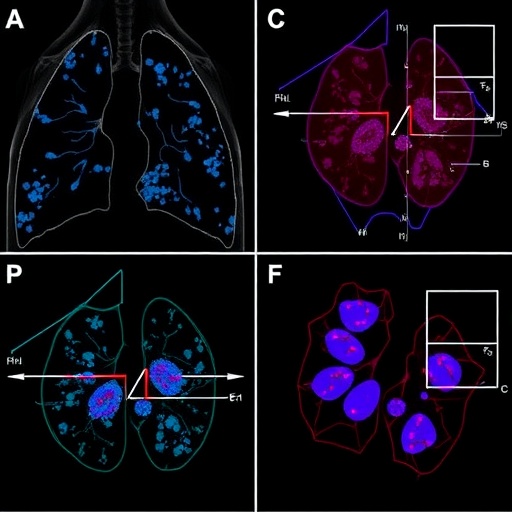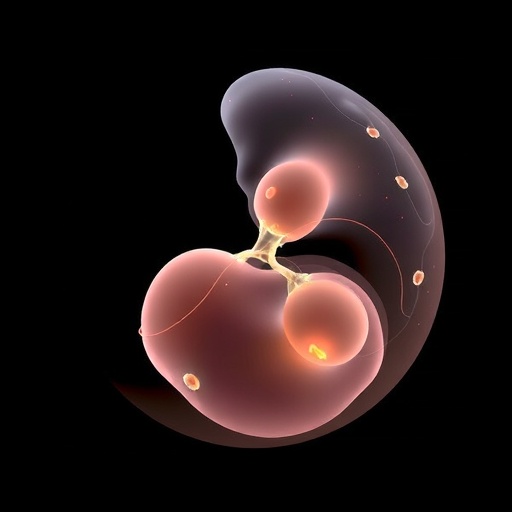PROTECT YOUR DNA WITH QUANTUM TECHNOLOGY
Orgo-Life the new way to the future Advertising by AdpathwayIn a groundbreaking study, researchers have successfully synthesized and characterized silica (SiO₂) nanoparticles using the leaf extract of Tridax procumbens, a plant recognized for its medicinal properties. This green synthesis technique not only highlights an eco-friendly approach to nanoparticle production but also leverages the intrinsic healing capabilities of nature to enhance therapeutic applications. The findings of this research promise significant advancements in the field of regenerative medicine, particularly in the realm of wound healing.
The synthesis of SiO₂ nanoparticles has garnered widespread interest due to their unique physicochemical properties. These nanoparticles exhibit remarkable biocompatibility and non-toxicity, making them ideal candidates for various biomedical applications, including drug delivery and tissue engineering. In this study, the researchers employed a simple yet effective method of green synthesis, utilizing the phytochemicals present in Tridax procumbens leaf extract. This approach eliminates the need for hazardous chemicals typically used in conventional methods, showcasing a sustainable alternative that aligns with contemporary environmental demands.
The choice of Tridax procumbens is particularly significant given its diverse pharmacological properties, including anti-inflammatory, antimicrobial, and antioxidant activities. These properties make it an excellent source of natural agents that can facilitate the synthesis process. The researchers carefully optimized the extraction procedure to ensure maximum bioactive compound retrieval, which is crucial for the efficacy of nanoparticle formation. The resultant nanoparticles were subsequently characterized using advanced techniques such as X-ray diffraction (XRD), transmission electron microscopy (TEM), and scanning electron microscopy (SEM).
Characterization of the synthesized SiO₂ nanoparticles revealed a uniform size distribution, with diameters typically ranging from 10 to 50 nanometers. The researchers noted that the smaller size of these nanoparticles could enhance their bioavailability, thereby facilitating better interaction with biological components. Additionally, the surface area and porosity of these nanoparticles were evaluated, further confirming their suitability for various applications within the biomedical sector.
One of the standout features of this study is the exploration of wound healing activity using the synthesized SiO₂ nanoparticles on L929 fibroblast cell lines. Fibroblasts play a pivotal role in the wound healing process, facilitating tissue remodeling and repair. The research team conducted in vitro experiments to evaluate the impact of the nanoparticles on fibroblast proliferation and migration, two critical factors in wound healing.
Initial findings indicate that SiO₂ nanoparticles significantly enhance the proliferation of L929 fibroblast cells. This stimulatory effect is particularly promising, as it suggests that the nanoparticles may serve as a potent therapeutic agent to accelerate wound healing. Furthermore, the research delved into the mechanisms underlying this enhancement, hypothesizing that the nanoparticles might modulate cellular signaling pathways involved in growth and healing, thereby optimizing the regenerative process.
Beyond their proliferation-enhancing properties, the SiO₂ nanoparticles also demonstrated remarkable potential in promoting collagen synthesis. Collagen is an essential protein in the wound healing process, providing structural support and strength to newly formed tissues. By increasing collagen deposition, the nanoparticles could substantially influence the quality of the healing process, leading to better functional outcomes in wound repair.
The researchers also took care to assess the safety profile of the synthesized nanoparticles. Toxicity assays revealed that the SiO₂ nanoparticles exhibited minimal cytotoxic effects on the fibroblast cell lines, a crucial consideration for any therapeutic application. This biocompatibility reinforces the potential of these nanoparticles in clinical settings, where safety is paramount.
As the study progresses, the researchers are set to explore the in vivo efficacy of these SiO₂ nanoparticles. Translating these in vitro results into animal models will provide invaluable insights into their therapeutic effectiveness and safety in a living organism. Successful outcomes in such studies could pave the way for clinical trials, addressing pressing needs in wound care management and regenerative therapies.
In addition to their use in wound healing, the implications of this research extend to various other fields, including cancer therapy, where targeted drug delivery remains a significant challenge. The biocompatible nature of the nanoparticles suggests that they could be engineered to carry anti-cancer drugs directly to tumor sites, minimizing systemic side effects and increasing therapeutic efficacy. The versatility of these nanoparticles holds immense potential for novel therapeutic strategies across multiple disciplines.
Overall, the research conducted by Palanimuthu et al. illustrates a promising intersection between traditional medicinal knowledge and modern nanotechnology. By capitalizing on the natural resources available in the environment, they have demonstrated a sustainable approach to advancing biomedical applications. As the quest for innovative and efficient therapeutic options continues, the synthesis of SiO₂ nanoparticles from Tridax procumbens presents a noteworthy advancement worthy of further exploration.
The integration of technology and nature to create functional nanoparticles is not only a testament to human ingenuity but also reflects an emerging trend towards eco-friendly methodologies in science. This study serves as a reminder of the potential that lies within the natural world, urging scientists to look beyond synthetic chemicals in their quest for solutions to complex health challenges. As the research community continues to unravel the capabilities of nanomaterials, the contributions of plant-based synthesis will likely become increasingly vital in forging a sustainable future in medicine.
In conclusion, the investigation into the synthesis and characterization of SiO₂ nanoparticles using Tridax procumbens leaves presents a compelling case for the efficacy and safety of these nanomaterials in promoting wound healing. The promising results not only bolster confidence in their potential clinical applications but also inspire further research into harnessing natural resources for nanotechnology advancements. By merging nature’s wisdom with scientific innovation, the landscape of wound healing and regenerative medicine may soon witness transformative changes that enhance patient care and outcomes.
Subject of Research: Green Synthesis of SiO₂ Nanoparticles for Wound Healing Applications
Article Title: Green Synthesis and Characterization of SiO2 Nanoparticles Using Tridax Procumbens Leaf Extract and Enhancing the Invitro Wound Healing Activity in L929 Fibroblast Cell Lines
Article References:
Palanimuthu, V., Rajendran, N., Periakaruppan, R. et al. Green Synthesis and Characterization of SiO2 Nanoparticles Using Tridax Procumbens Leaf Extract and Enhancing the Invitro Wound Healing Activity in L929 Fibroblast Cell Lines.
Waste Biomass Valor (2025). https://doi.org/10.1007/s12649-025-03364-3
Image Credits: AI Generated
DOI: 10.1007/s12649-025-03364-3
Keywords: SiO₂ Nanoparticles, Green Synthesis, Tridax Procumbens, Wound Healing, Regenerative Medicine, Biocompatibility, Nanotechnology
Tags: antimicrobial properties of plant extractsbiocompatible nanoparticles for medicinedrug delivery systems using nanoparticleseco-friendly silica nanoparticlesgreen synthesis of nanoparticlesnon-toxic nanoparticles applicationsphytochemicals in green chemistryregenerative medicine innovationssustainable nanoparticle production methodstissue engineering with silica nanoparticlesTridax procumbens medicinal propertieswound healing advancements


 10 hours ago
15
10 hours ago
15





















 English (US) ·
English (US) ·  French (CA) ·
French (CA) ·